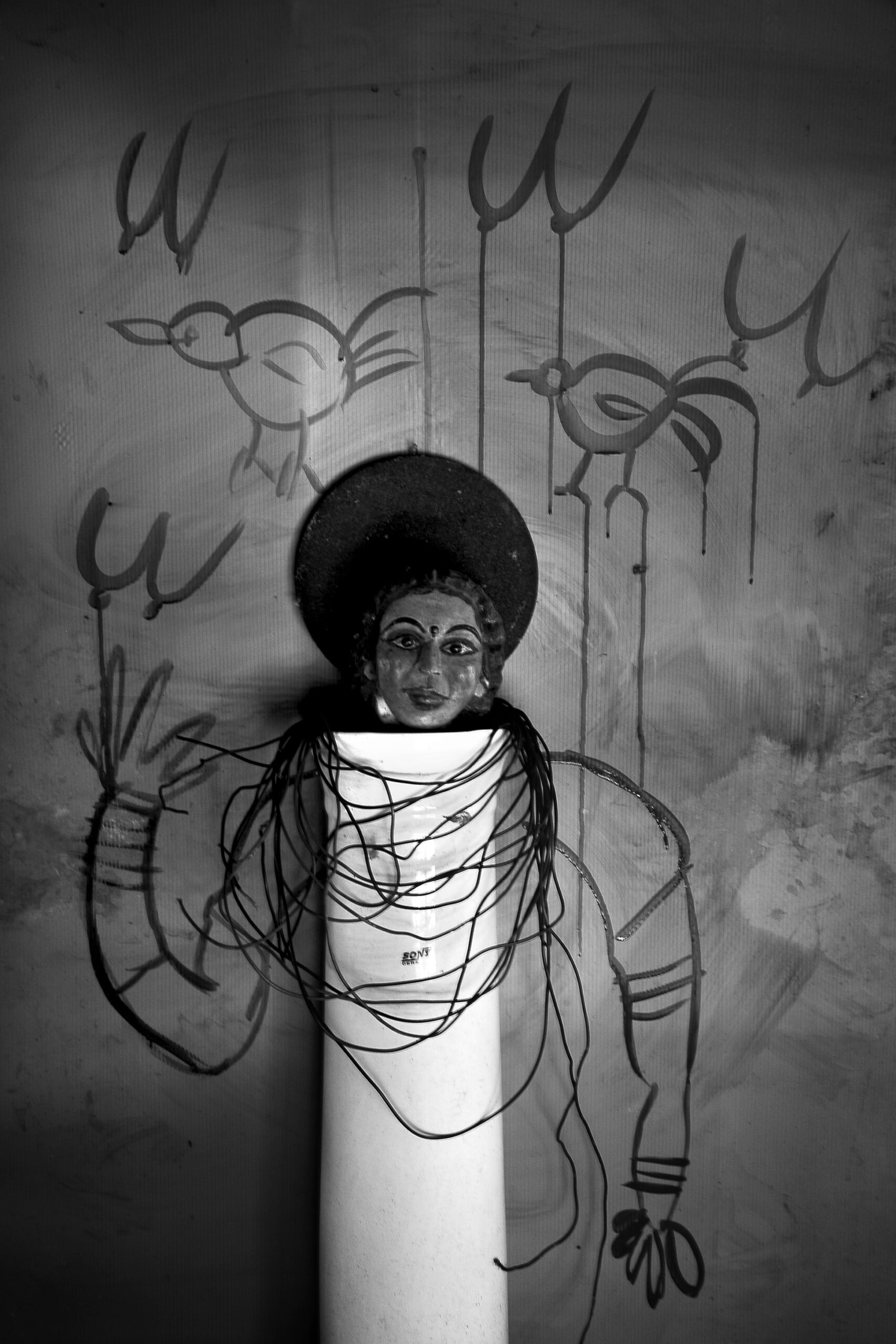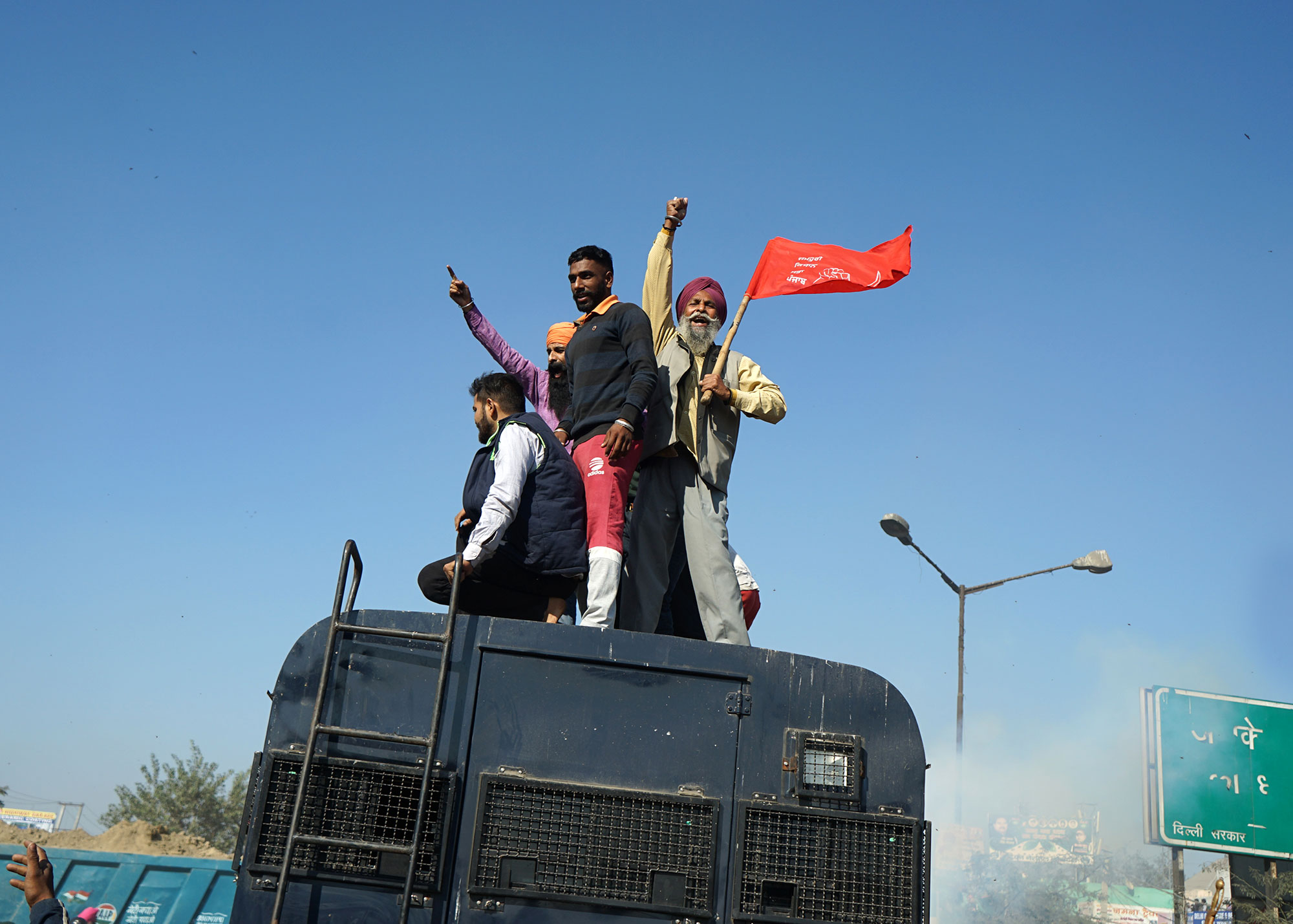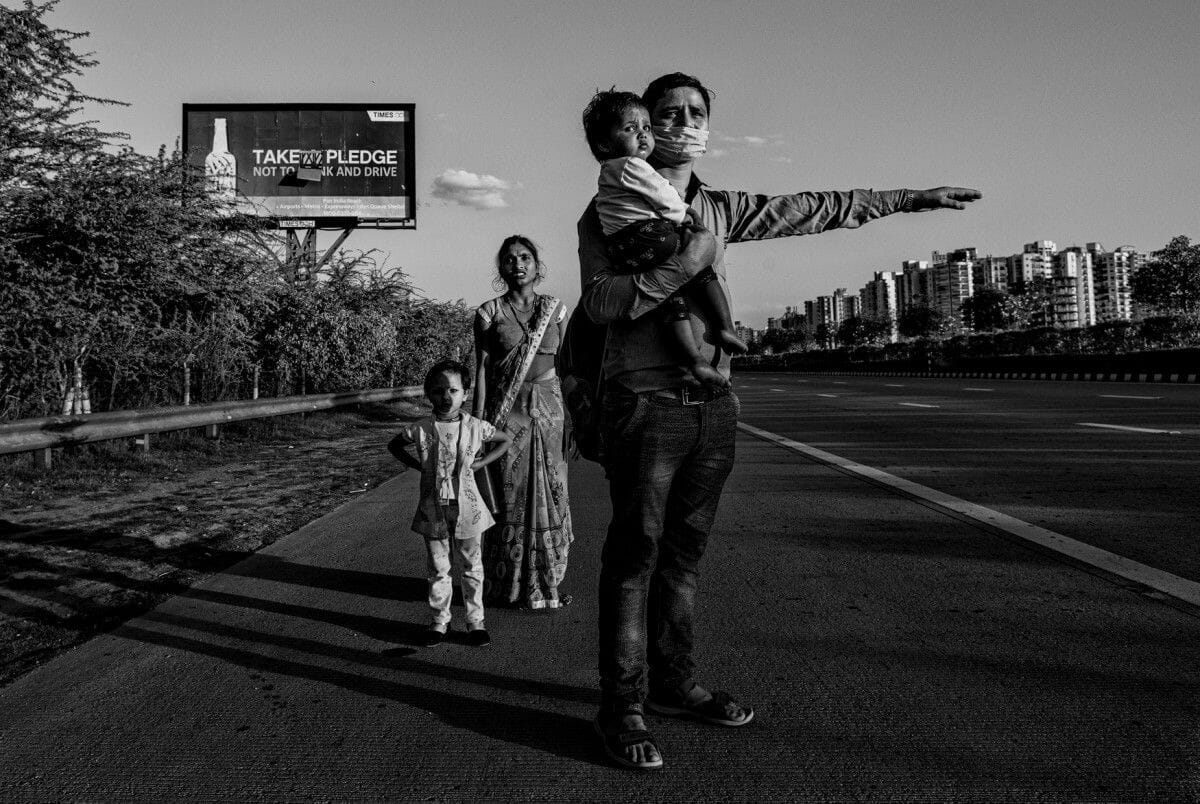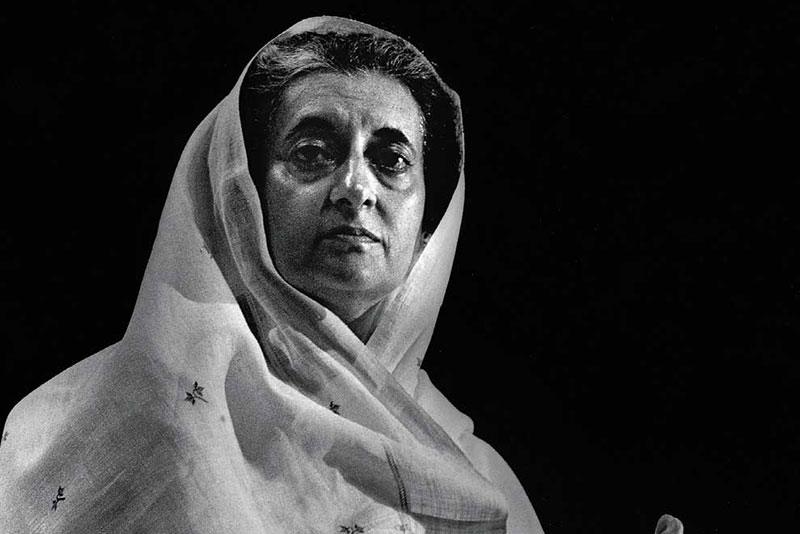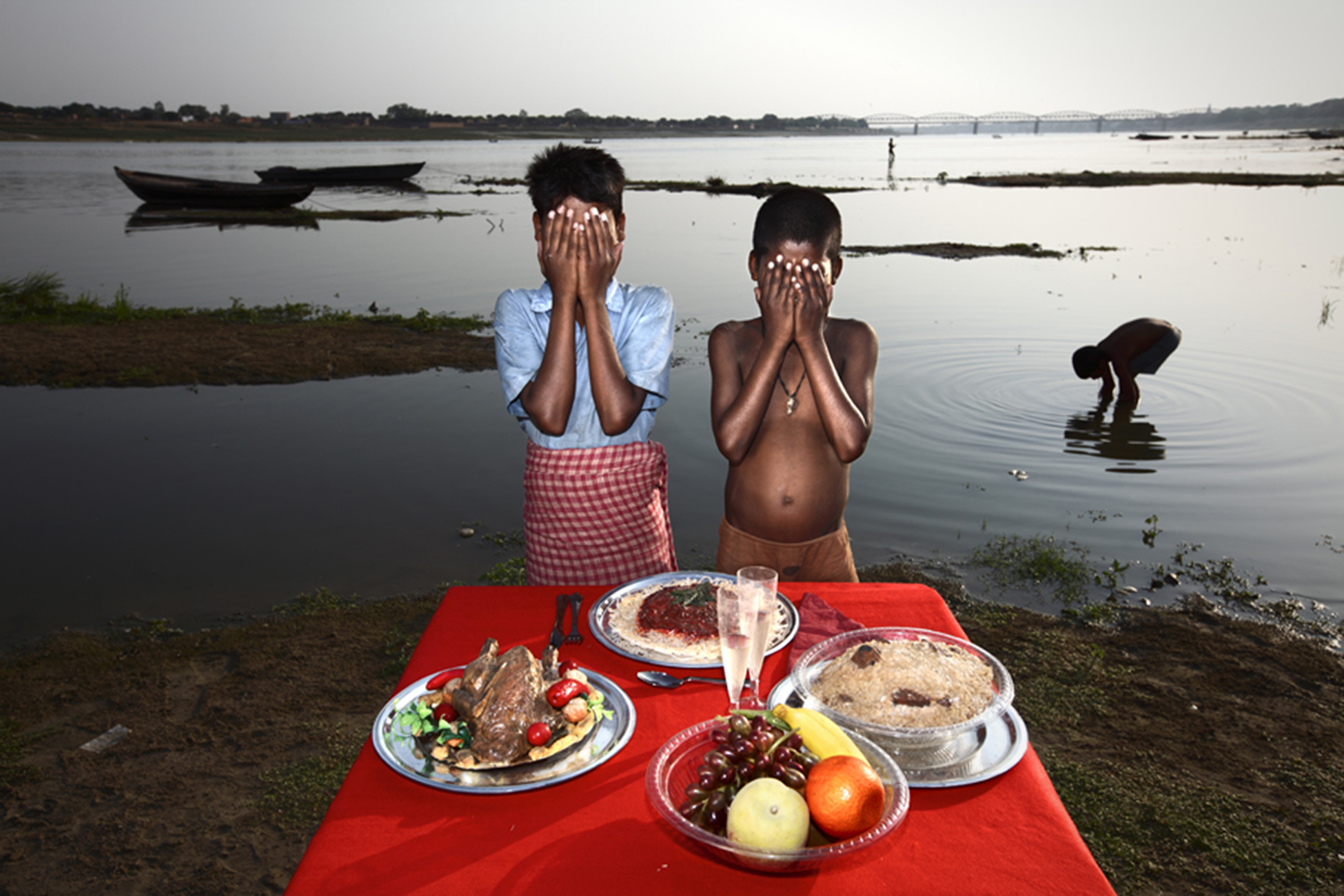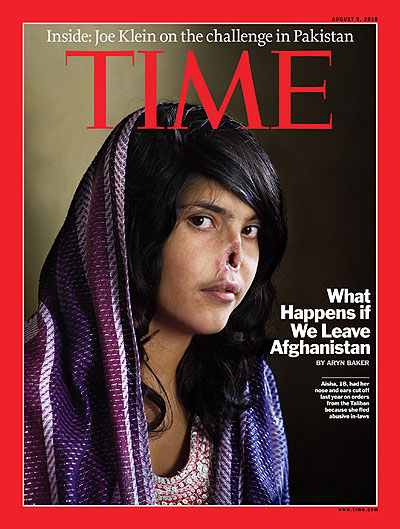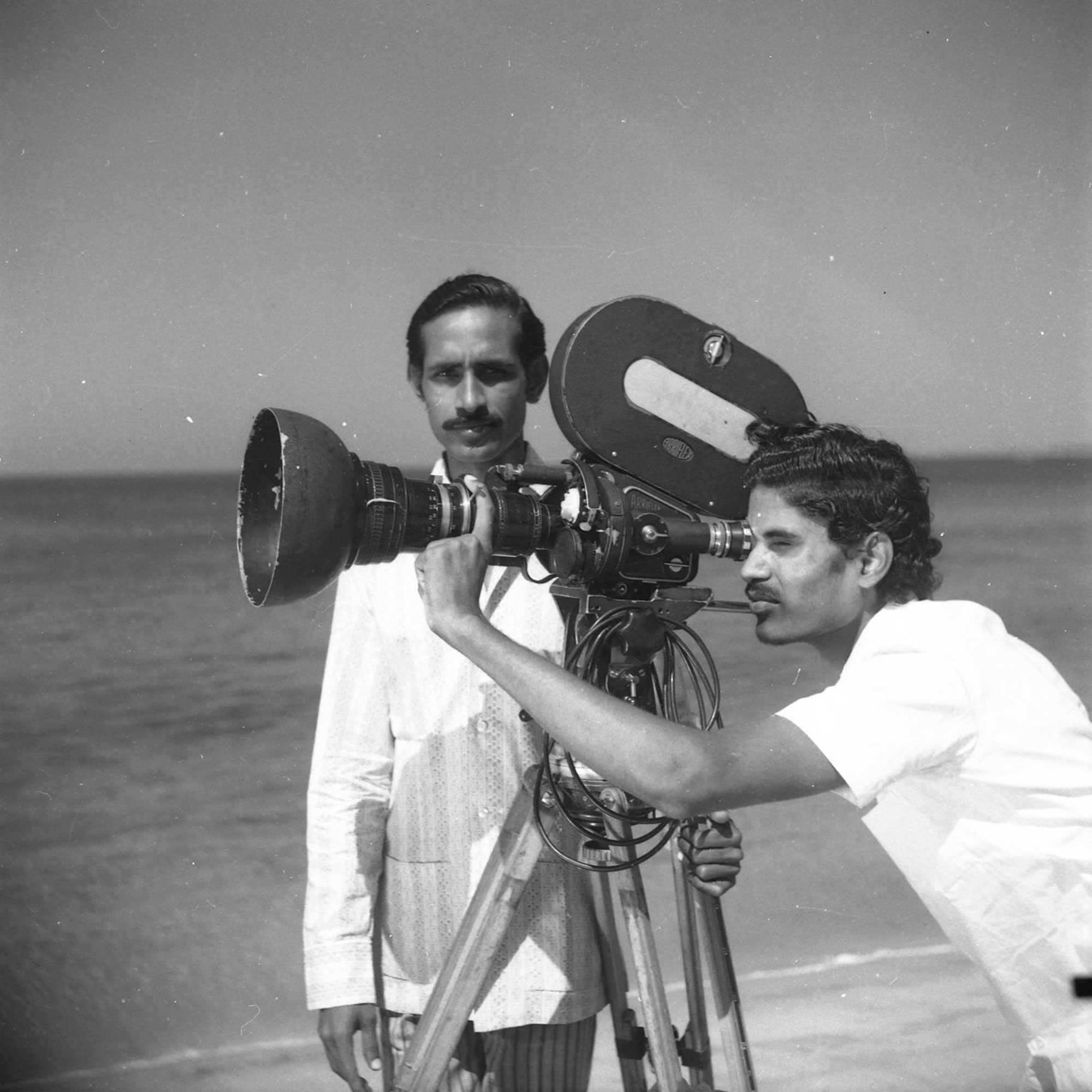Focus
Reflections
Photo Mail focuses on
Contemporary photography
Practitioners, their works, and
Its aesthetics
In the broader context of
Photographic theory and
Philosophy
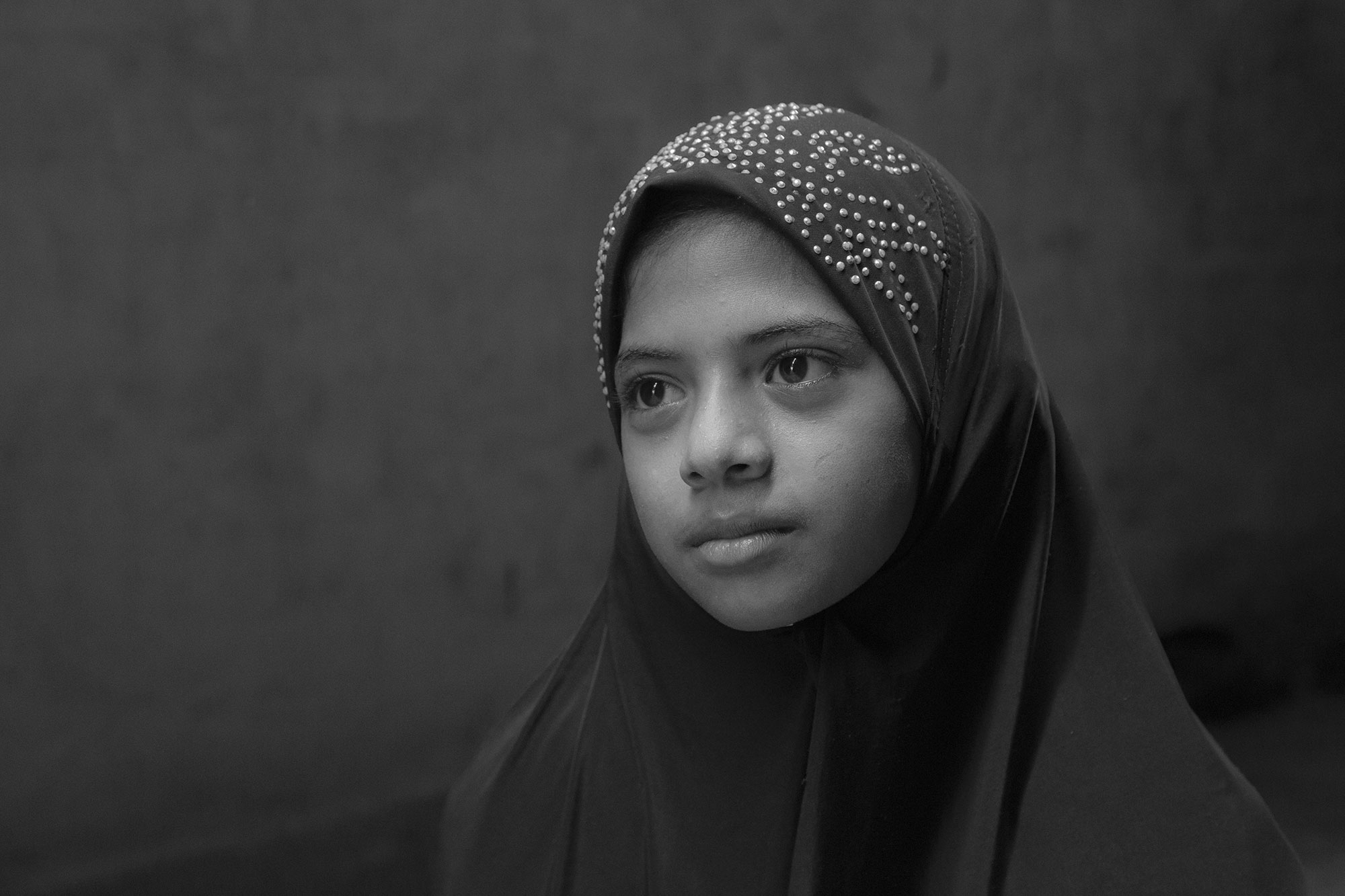
Children of Tiruvannamalai © Ami Gupta / Project 365 Public Photo Art Archive Tiruvannamalai
WEarrive late at night, slowly rumbling over unavoidable potholes on a dark, tree-lined road. Our driver, Sanoj, is confused about his GPS. My assistant Ganpat and he are arguing about whether or not we have missed a turn. It is then that my mobile, which has been without tower, finally picks up a call from Tulsi, Abul Kalam Azad’s close friend and Managing Trustee of the Ekalokam Trust for Photography. Within minutes a small motorbike is sputtering up besides us; guiding us to the farmhouse complex that is to house us for the next seven days. A power outage has cut electricity, and the oppressive heat of a late south-Indian April insistently clings throughout a sheetless naked sleep.
Welcome to Project 365, a year-long photo documentation of the temple town of Tiruvannamalai in the heart of Tamil Nadu, for which Tulsi Swarna Lakshmi is Project Manager. Abul is up early, fixing a broken fuse. Our ceiling fans shudder back into a groaning swirl. With a lungi wrapped around his waist, and fresh boiled tea in hand, Abul is already pointing toward the mountain. “Look at that. It’s magic. The geography here creates a power. You can feel it. You can feel it every day. It is constantly changing, yet millions of years old.” Indeed, the not-too-distant peak is circled by a ring of clouds. There is something uncanny about it. And then, within moments, the nebulous halo vanishes like an apparition. The first rays of the sun are casting long, dark green shadows across the fields.
Abul Kalam Azad is an old friend. I’ve admired his work for over a decade, and yet it wasn’t until recently that I learned of his interest in “Tiru” (as the locals call it). I had always pegged the artist as a strictly Kerala man, but this misconception has now been dispelled. While preparing for this trip I had come across an interview with Abul conducted by the publisher Anil Cherukupalli, and in it is an explanation: “For almost ten years I didn’t exhibit images of Tiruvannamalai. A part of me didn’t want to attract unwanted tourist attention to this ancient town; I was really concerned about the mystical dimension of this town having to bear the ignominy of being ‘groomed’ into a tourist destination. During the recent years, we all know India is fast changing. This town is no exception. The fast changing landscapes and vanishing lifestyle made me re-consider my decision. In the absence of a comprehensive, non-biased, collective document, there is a possibility for our future generations to completely lose touch with our ancient landscape, lifestyle, culture and our mystical roots. Using the popularity and power of the medium of photography, I wanted to build our Nation’s visual treasure for posterity.” And thus was born Project 365, an undertaking utilising twenty-five emerging photographers, and fifteen well-known photographers, to document a transforming temple town in their own unique ways, and, through their efforts, create a lasting record of a quickly transforming cultural, architectural, and physical landscape.
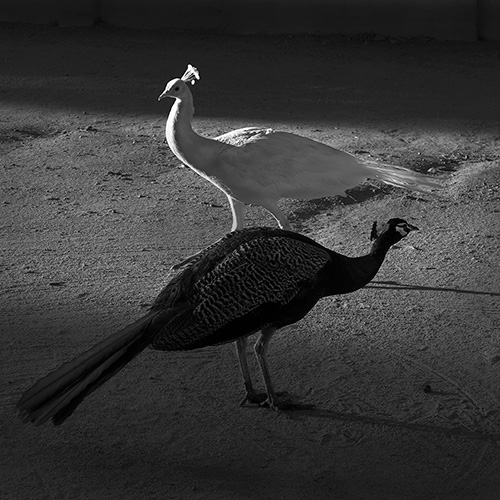
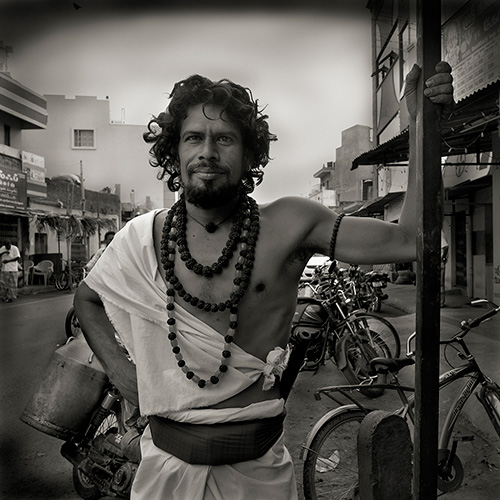
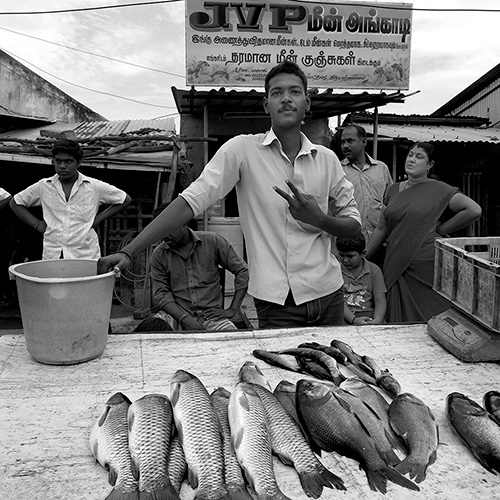
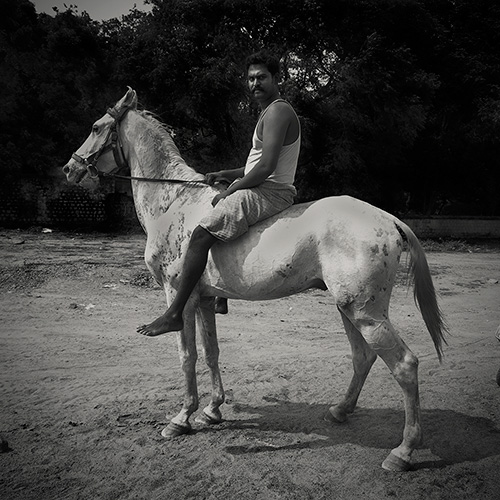
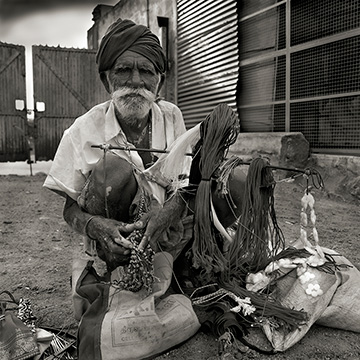
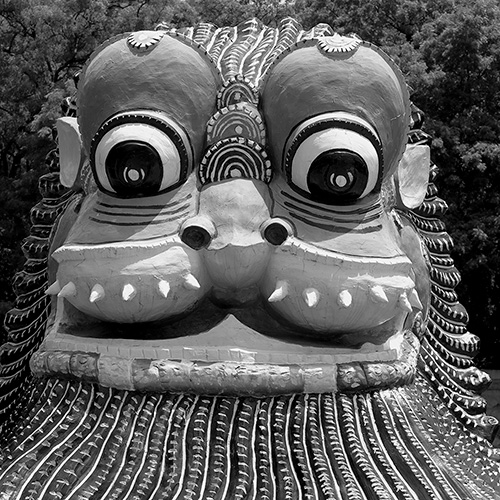

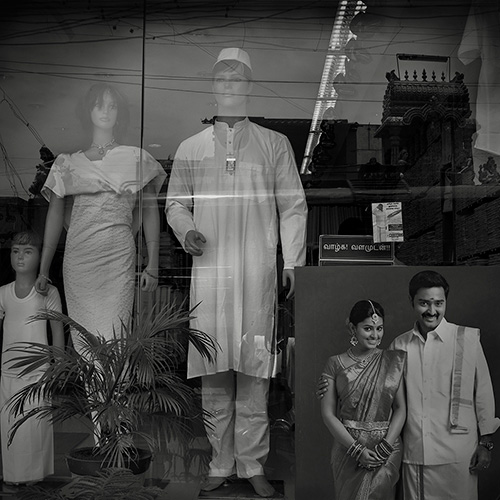
Chronicles of Tiruvannamalai © Abul Kalam Azad / Digital Archival Prints / Project 365 Tiruvannamalai Public Photo-art Archive
One of those photographers is Arnav Rastogi, a young man from Delhi who is, like me, taking temporary residence within a house on the farm complex. It is not yet 7 a.m. and already he is returning from a shoot, camera tucked safely in the side pocket of his motorbike. Arnav has been, among other things, concentrating on photographing people’s living rooms. It is a strangely intimate approach, an approach that eschews Tiru’s grand vistas and stone temples for small cluttered spaces that silently speak of family, ancestry and belief. Tales are told in Arnav’s images, though they are not presented as narrative, but as a series of clues: a glossy calendar hanging from a freshly painted wall, a small decal of a popular politician, the gods and goddesses chosen to inhabit the family shrine, greasy marks on pale blue walls just at a height that indicates unseen children. There are the missing things too: missing furniture, missing televisions; a piled desk without a chair. It is left for us to piece together the stories these odds and ends whisper. The clues speak softly, but with meanings extending beyond the people who inhabit these spaces.
Beyond these living rooms, Tiruvannamalai is a compelling mix of public spectacle and inner life. Raucous colourful rituals contain prayerful supplications. The isolated pilgrimage site swells with each full moon, as millions descend from Chennai and elsewhere to circumambulate the sacred mountain, departing as swiftly as they came. The Annamalai, on top of which Lord Shiva is said to have restored light to the world, has witnessed these events, in one form or another, for the past twelve thousand years. Though the Annamalaiyar Temple remains a focal point of spiritual pilgrimage, it is the Annamalai, the mystical mountain itself, which powers the worshippers’ imagination.
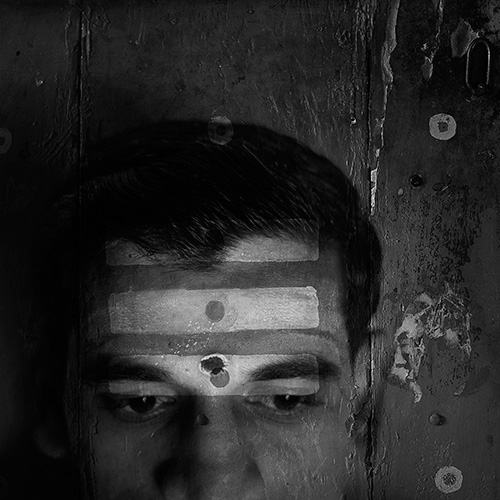
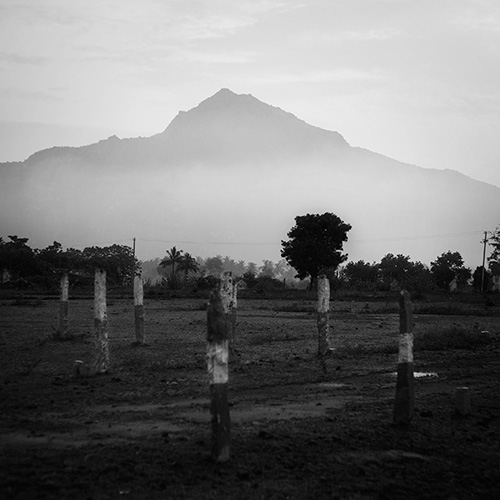
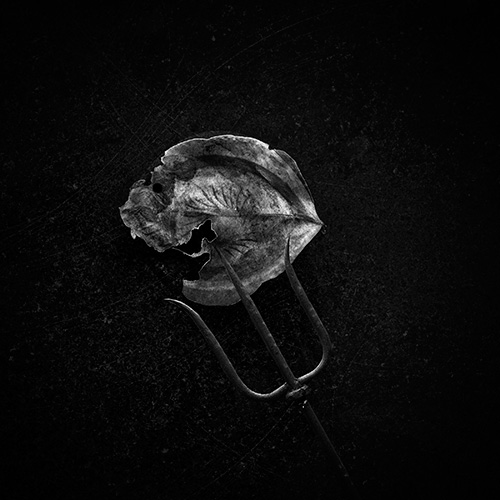
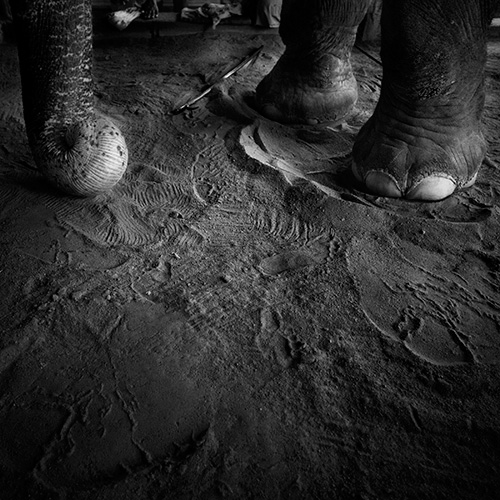

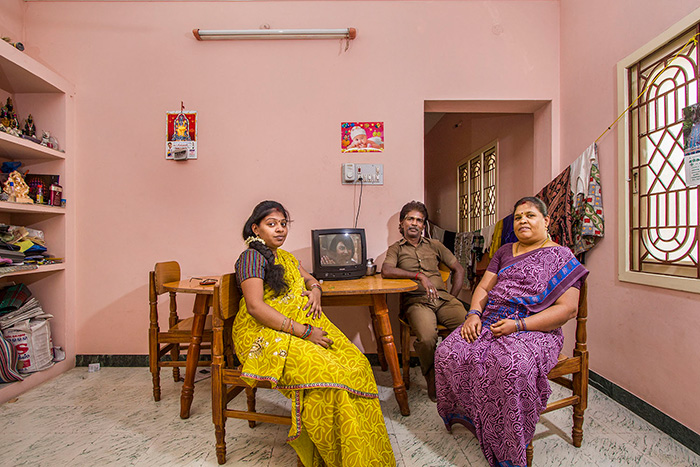
First row © Bhagyashri Patki | Second row © Arnav Rastogi | Digital Archival Prints | Project 365 Tiruvannamalai Public Photo-art Archive
The essence of this belief is addressed by Bhagyashri Patki, the producer of what are perhaps the most religiously linked images within the project. Photographs that hover between the everyday and the ethereal suggest the omnipresent mysticism of Tiru’s geography, while silent meditations more akin to still life evoke spiritual meaning and religious reference. The artist ranges broadly, overlaying a face upon a roughly painted board marked with the three horizontal lines of Shiva, or focusing our attention on the discarded wooden matches used to light the myriad oil lamps of a temple. Patki herself has said, “The photographs are a depiction of the life stories of Nayanmars, the poets of Lord Shiva who composed liturgical poems of the Thirumarai. These verses express the devotee’s desire to meet their reverend.” The project, which the artist has titled “Mystical Saints”, is intrinsically coupled to Tamil literature, with Patki linking images with actual text. The spent matches are thus joined with lines from Manickavasakar, “Rid me/and induct me into the fold of your devotees,” a poetical reference alluding to the cycle of rebirth.
Spirituality is expanded upon by Ami Gupta, whose project “Children of Different Gods” explores diverse communities, and their interaction, through an intimate knowing of Tiru’s youngest inhabitants. “Most children are born into a religion. Faith is something that is fed to them,” Gupta explains, “Every school has a religious background, and all these concepts they are exposed to define their personality as they grow older. As adults, they stick to their own communities and social circles of likeminded people, usually ones who follow the same or similar ideologies. But universally, children are all the same: innocent, happy at heart and a little naughty at times.” Ami has joined us late at night, having driven in from Chennai. She is speaking of her project as we sit outside Abul’s front porch under a bluish, cloud-speckled moon. We’ve all devoured vegetarian and fish curries cooked up by Tulsi; Arnav, who has had a long day, has already retreated to his cottage. The sounds of a football match on a flickering TV escape from Arnav’s window across the compound.
“One of my photos depicts the Vidyarthis (students) of the Veda Patasala in Ramana Ashram. You will find them every evening, the entire bunch, chanting the Vedas soulfully, as participants of the puja and aarti. In fact, they start their day at 5 a.m. with daily meditation, Brahma Yajnam, Sandhyavanndanam, which is a salutation to the transition of the sunlight, at dawn, noon and dusk, and they are immersed in Vedic study all day long till 9:30 at night. They all study, chant, learn, chat, bond and sleep in this one small room, and they visit their families just once a year. But in this photograph friends enjoy a light moment at the Samadhi Hall. They are children.”
Ami directs my attention to another of her chosen kids. “I’m in a relationship with every subject I photograph,” she smiles. “Basheera is a street smart, intelligent girl who knows every nook and corner of the famous temple and can give any guide a run for his money. After school she helps her mother at the chappal stall, where she collects the slippers of the Shiva devotees, and returns the same to them when they are on their way out. Jameela, her mother, is barely forty-five and has eighteen children. Some of them are old enough to be married while the younger ones are still in school. Basheera is a bright young girl who never ceases to charm me with her intelligence. She has many a time told me fascinating stories about the temple and its past while walking me through it. What I like about her is the way she accepts Hinduism and its ideals so effortlessly while holding on to her strong Muslim roots.” This ability to weave between the divides of religion finds expression in another of Gupta’s series on Kabir, a young boy born to a Vaishnav Gujarati mother and a Tamil Brahmin father who is growing up in a multi-cultural environment. Kabir attends the Marudam Farm School, which is, according to Ami, “A unique and unusual institution that believes in children growing up to be one with nature and true to their nature.”
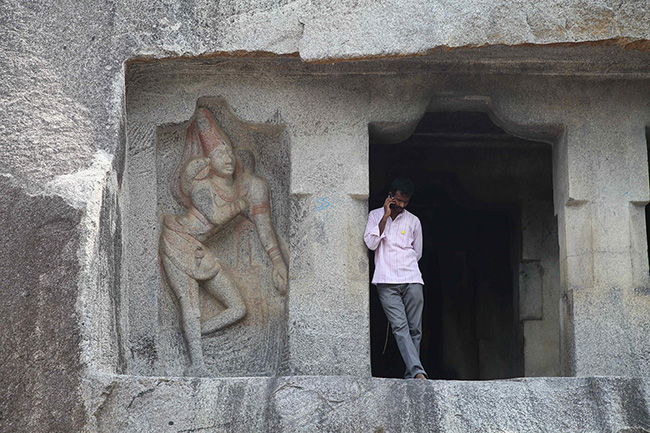
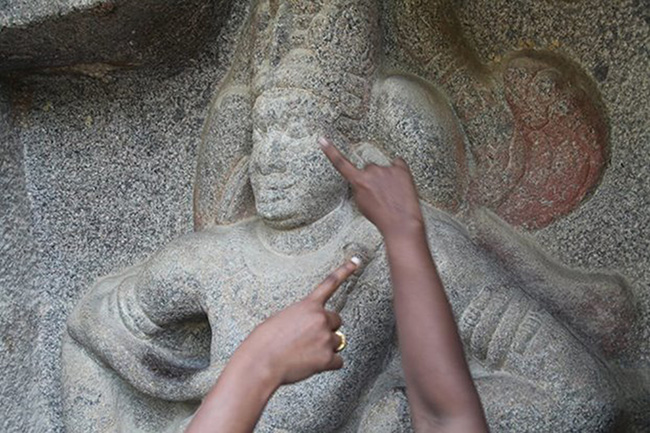
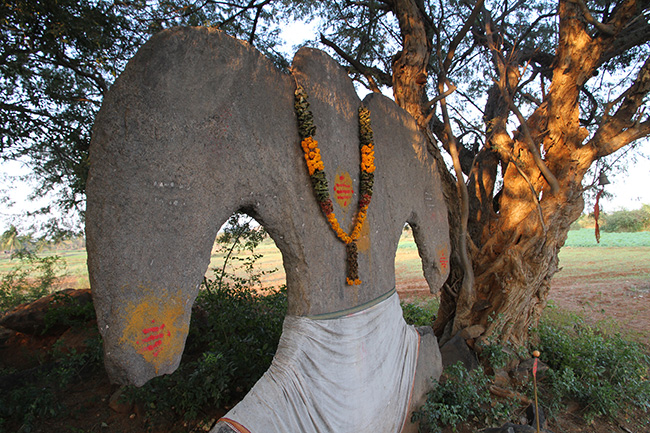
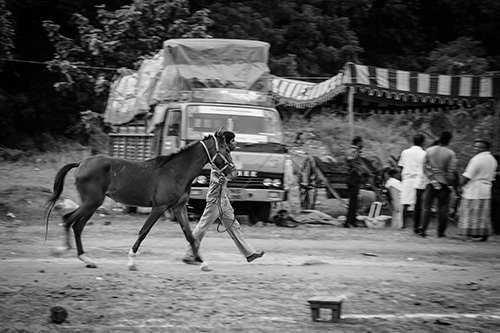
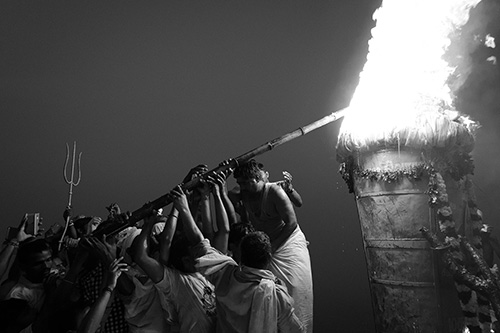
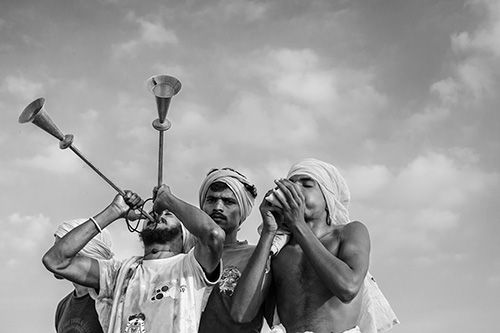
First row © RR Srinivasan | Second row © Jiby Charles | Digital Archival Prints | Project 365 Tiruvannamalai Public Photo-art Archive
My own work begins the next morning, heading out with Ganpat and Sanoj as the first hints of light alert sleeping birds. We’ve brought a linen backdrop painted by Zenule Khan in Udaipur, and are eager to make photographs before the light becomes so strong it shines through the cloth. In my practice I have steered clear of sadhu pix, finding in them the worst of foreigner-generated Indian clichés. Yet the very nature of Tiruvannamalai insists upon them. In Tiru, sadhus are everywhere. Their presence fills the town with its unique otherworldly life. It is not long before we are tying one end of Zenule’s backdrop to a tree, while juggling the other end of the supporting bamboo in the fork of a broken, hand-held branch. This juggling act raises the cloth into position. For a minute Abul and Tusli zoom up on a bike, wanting to document the documentarian. I wave them on in a bit of embarrassment, our low-tech methodology seeming amateurish in this out-of-the-studio context. Despite this, Sanoj is greatly helping with his ability to speak Tamil, and Ganpat, having worked with me for over nine years, knows exactly what I’m trying to achieve without much instruction. By the time the shots are made, I’m confident we have our first good image.
This is the essence of Project 365: each photographer creating according to his or her own desires, yet all working toward a common goal. The mix of approaches is the project’s strength. Variant perspectives give the wider view: from Jiby Charles’ exploratons of the areas ecology, to Dinesh Khanna’s obsession with vibrant colour and how those colours manifest in the faiths and lives of everyday people. M.K. Iqbal is making an intimate study of Tiru’s small Muslim population, while Leo James runs a parallel body of work lovingly portraying the even smaller population of Christians. R. R. Srinivasan is creating an intense “Archeological Mapping of Tiruvannamalai”. Srinivasan’s ambitious approach includes not only photographs, but detailed references to historical texts and written descriptions that read like an archeologist’s probing analysis of each and every image.
For the energetic Varun Gupta, Tiruvannamalai is but one aspect of a larger and continuing project, “The Photo Sewa”, which Varun began in 2013 at the Kumbh Mela. He is now in the third year of what he says has become a “lifelong journey”. Working exclusively in 4 x 5 format with black and white film, Varun “seeks to create a document of the people of India at this cusp in time”. He recounts the making of one of his photographs: “This image was taken on my very first visit to Tiruvannamalai on August 15th, 2014, which was the inaugural day of Project 365. Fellow photographer and 365 participant Yannick Cormier was giving me a tour of the area and brought me to this little known temple near the bus stand. As we approached on foot, the sound of amplified drums announced a festival that was in progress; complete with goat sacrifice and head shaving…the atmosphere was quite chaotic. At the side entrance to the festival these giant animal statues caught my eye and I prepared my setup.” The resulting image, difficult to capture when using a large format camera, speaks in both a current and a vintage tongue, at once suggesting a rooted presentness and an eon-old timelessness.
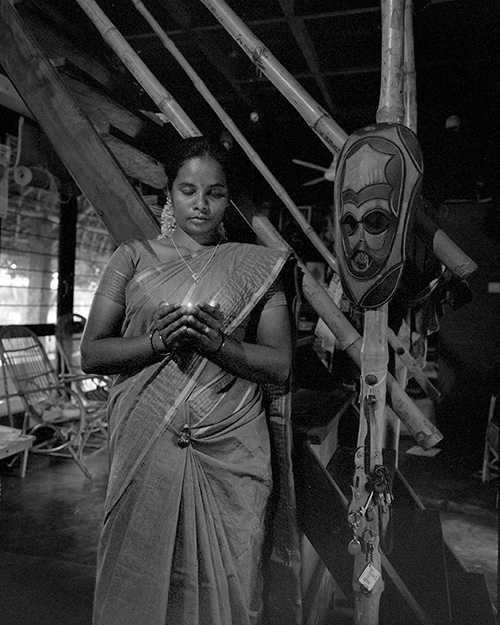
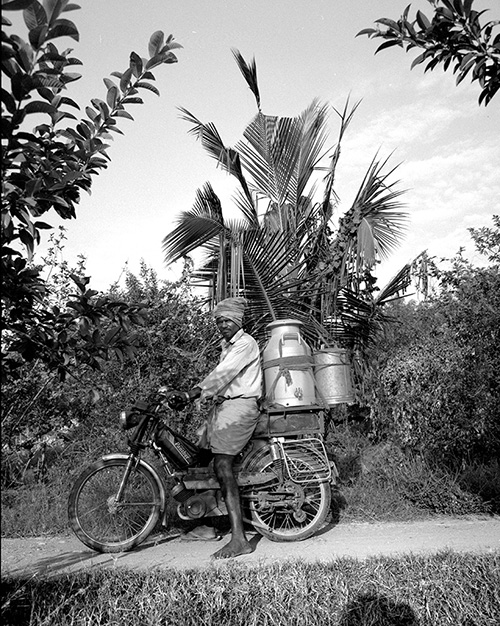
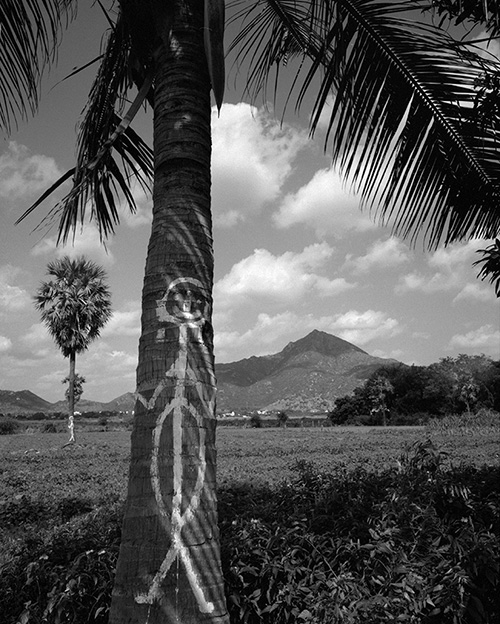
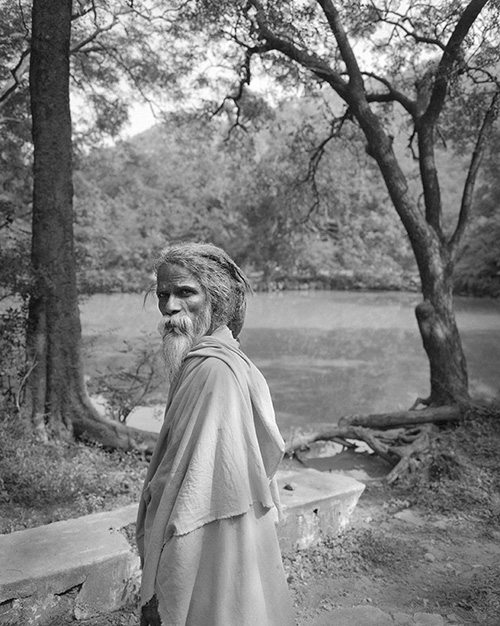
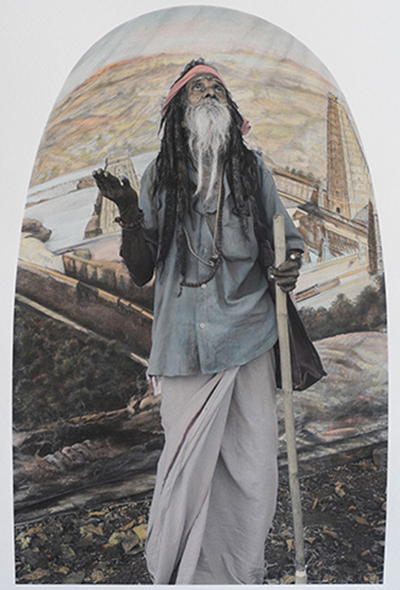
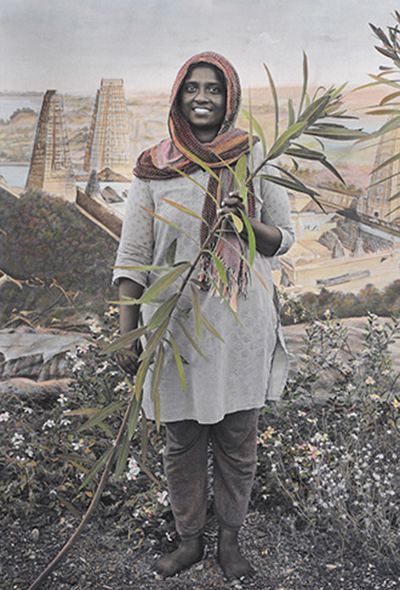
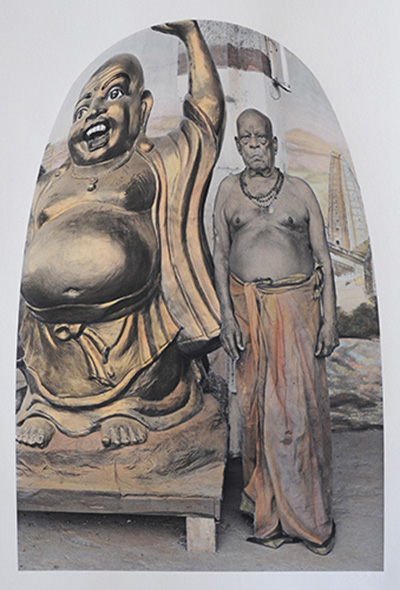
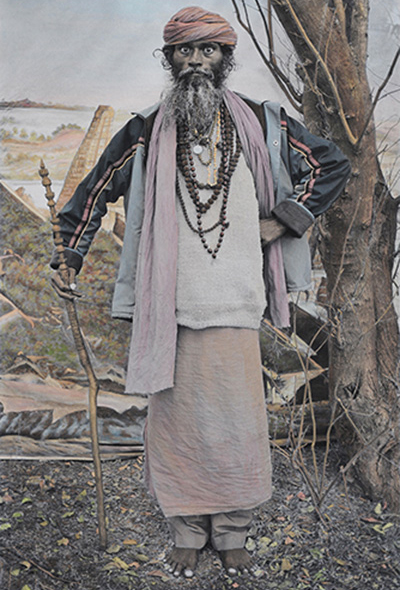
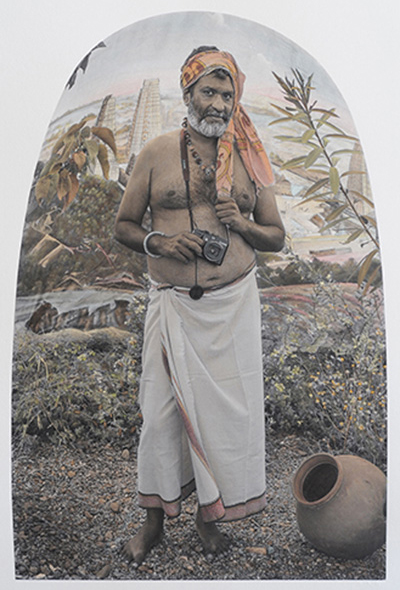
First row © Thierry Cardon | Palladium Prints | Second Row Untitled © Waswo X Waswo | Hand colored by Rajesh Soni | Digital Archival Prints | Project 365 Tiruvannamalai Public Photo-art Archive
Ganpat, Sanoj and I are back at Project 365 Tiruvannamalai camp house which is a rented farm complex, and, having rested during the heat of the day, we take a porch seat in the relative cool of the evening. Once again we watch the effects of cloud and light upon the sacred mountain. Abul’s daughter, Mahima, has given me an ayurvedic drink which she promises will have a calming effect that I’ll enjoy. In the distance a grove of young papaya nudge each other gently in an intermittent breeze. Abul is once again pontificating. He has always been opinionated and direct, one of the things I’ve loved about him. “You have to understand that this is just not documentation of what we see! That is superficial. This is feeling the energy of this place!
Take a look at what Ouso Chakola is doing! He is working on incredible gum dichromate prints! The process itself is a form of documentation! All of these things are in danger of being lost. Do you know that not far from here was a cave? A cave where sadhus lived to be thousands of years old!” I’m smiling by now, and suspect the calming drink has had its effect. The light has fast disappeared, and the mountain is fading to silhouette. “You should be here when they set the top of the mountain on fire! For one full week they carry the ghee up the mountain, and then on Karthikai Deepam it is set ablaze. It is like a giant torch! You can see it for miles!” I interrupt my host’s long and interweaved stories, laughing out, “We should call you Baba Abul!” Ganpat and Sanoj pick up the name, and soon we are all pretending to touch the feet of our new saint with that curious combination of teasing and respect that can exist only among friends. “We shall photograph you tomorrow as Baba Abul,” I announce. There is a general laughter and quick agreement. Abul waves his hands with a whatever-you-want look of mild irritation, and then resumes his stories.
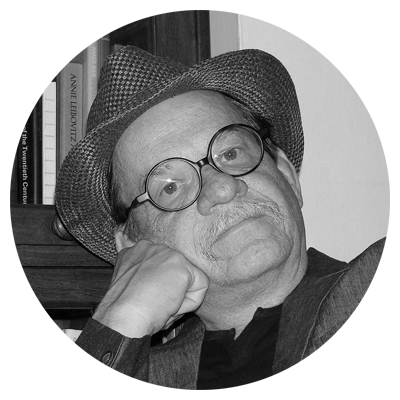
Waswo X Waswo is a photography artist and a prolific writer-poet who was born in the United States, settled and practising in Rajasthan.
Published on December 8, 2020
Share
Related Articles
A Canvas of Motions
Young photographer Arun Inham's A Canvas in Motion combines photography, theatre, and performance, is one of those projects that fall within the scope of now-trending experimental and conceptual photography practices. This body of work was done during the pandemic lockdown period. Confined within a small space, he interestingly stages objects and stitches them together as an image. These works were showcased at the Images of Encounter online group exhibition, which would be Arun Inham's first show.
Dilli Chalo: Ready for the long haul
As part of the ‘Dilli Chalo’ protest called on November 26 and 27, lakhs of farmers, laborers, and small traders decided to march from Punjab, Haryana, western Uttar Pradesh, Madhya Pradesh, and other states towards Delhi. During their attempt to reach Delhi, the farmers faced warlike resistance from the Indian government at two inter-state borders. Protesters occupied several miles of highway with their tractors and trolleys.
The Long Walk to Home: A Critical Reading
During the corona pandemic lockdown, India saw its migrant workers walk in an ardent will to reach the safety of their homes… History repeats itself, they say. Well, not exactly the same situation, but during Indian’s partition, thousands of Muslims and Hindus had to cross over – in search of a new home in unknown terrain. Seen through the photographic eyes of Margaret Bourke-White and Sunil Janah – the horrifying events of Indian Partition 1947 comes alive – once again in the Corona days – much more violent, cruel, and gruesome. It is a stark reminder that even after 70 and odd years of independence, India still has not healed itself of poverty, inequality, and oppression.
Perspectives on Photography
What we normally forget is that the lens of a camera sees more than the normal human eye is capable of. The clarity and the depth in a photographic image are taken for granted as we considered the camera as an extension of our eyes though what it sees is an abstracted or unperceivable image for the naked human eye. Seeing more or seeing in detail foregrounds the notion of abstraction because the form captured by the camera is only partially visible and its comprehension, in the normal course of our ways of seeing, is difficult.
Iconic Faces, Zooming into Raghu Rai’s photographic practice
Portrait photography is one of the areas where Raghu Rai has displayed mastery, and where he has revealed his own deepest convictions about the medium. Photomail investigates photographs of four spiritual and political leaders made by Raghu Rai, seeking to find what patterns run beneath the surfaces of these images.
Indian Photography’s (Conceptual) Poverty and Reality
Alessio Mamo’s series of photographs titled ‘Dreaming Food’ was shot in Uttar Pradesh and Madhya Pradesh in 2011, in which he tried to illustrate the contrast in the manner food was wasted in the West “especially at Christmas time”, and the widespread poverty that he saw in parts of India. The series was exhibited in Delhi Photography Festival in 2013, but when he posted images from the series during his takeover of World Press Photo’s Instagram handle as one of its awardees of 2018, a public debate erupted around the nature of his work and its political correctness. WPP has since issued a statement in which it clarifies the guidelines for its Instagram takeover, which is a benefit given to its award winners. But Indian print and online media subsequently took up the issue and it has been given wide coverage, with experts, photographers, and commentators weighing in from all sides. Now that all the arguments for and against have been brought out, PhotoMail takes a look at this issue in the broader context of poverty representation in India.
Power, Democracy and ‘Other’ Women
Photography, after the Second World War and McCarthyism, was consciously pushed into the sanitised spaces of Art galleries and Museums away from its past as a concerned, conscience-pricking tool. We were told by institutional gatekeepers like the Museum of Modern Art in New York that Photography was only about Itself. It was an Art form that was about navel-gazing photographers and about flattened formalist fields. Photography was not supposed to exist outside its own frame.
Stills Still to Fade, Immortal images of NL Balakrishnan
Does a photo carry a meaning? Like a memory which has a meaning, photo doesn’t in itself have a meaning. Stills don’t speak but they are not dead as such. They evoke memories and memory evokes the meaning behind the image. - NL Balakrishnan


